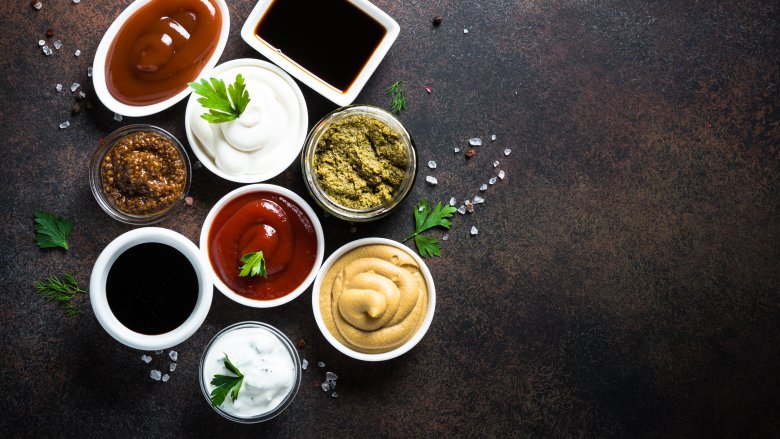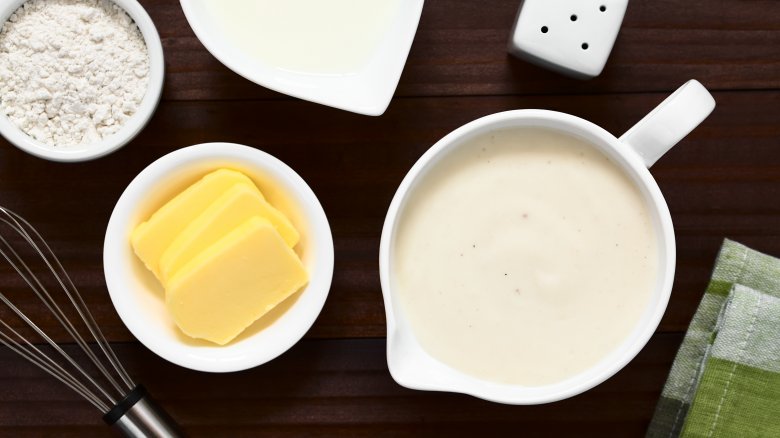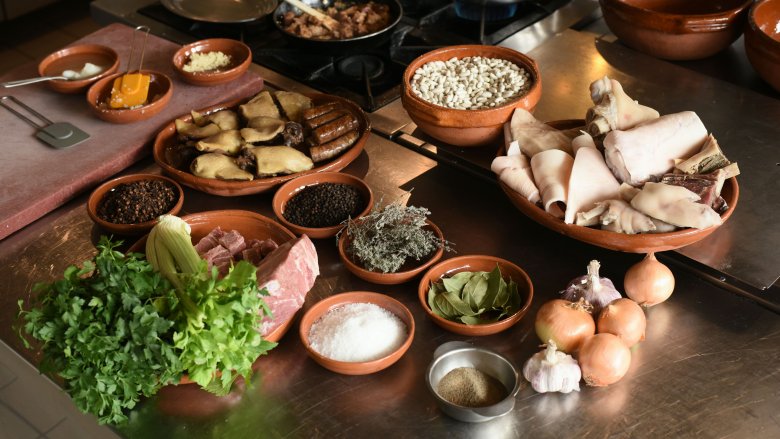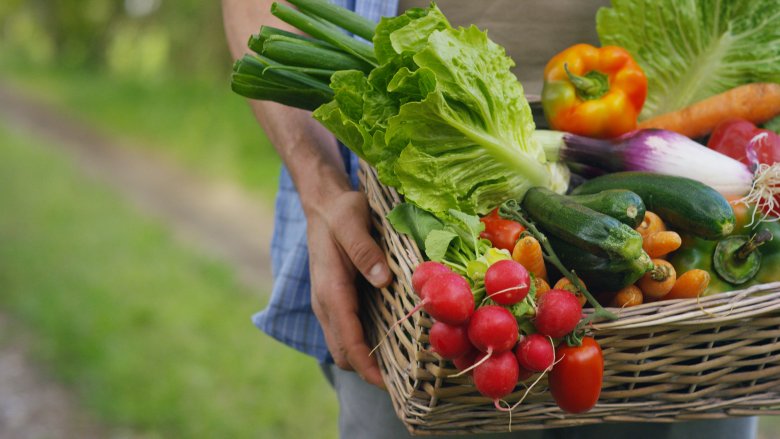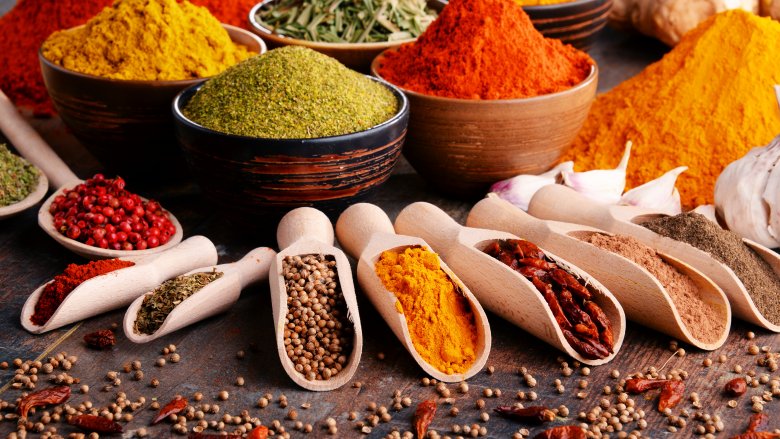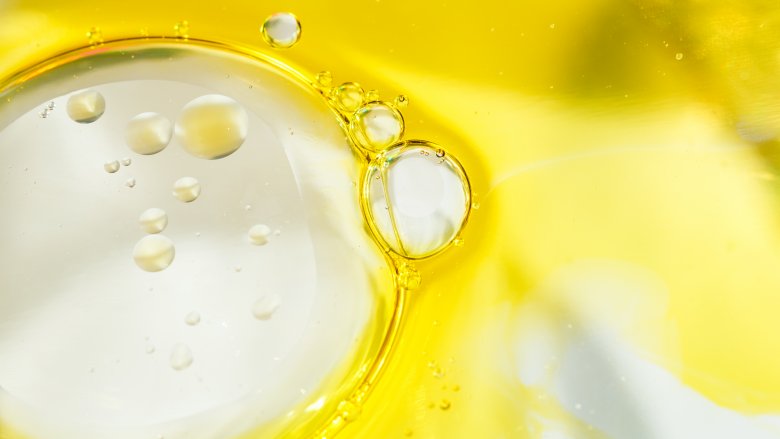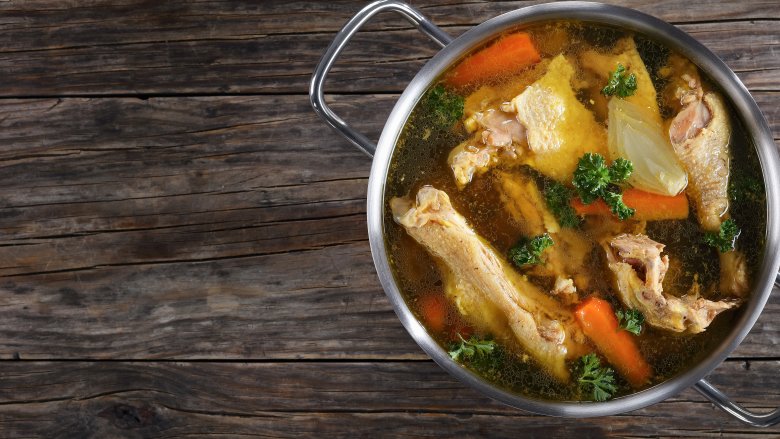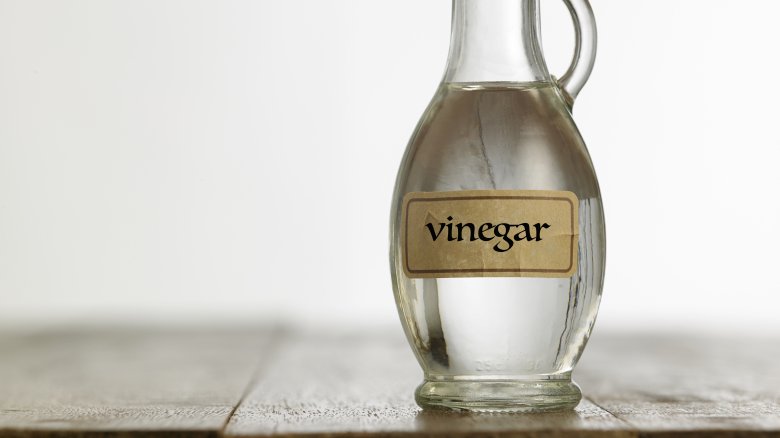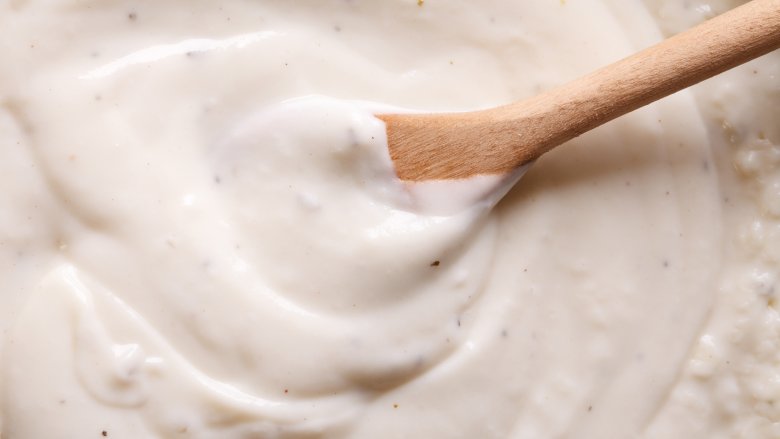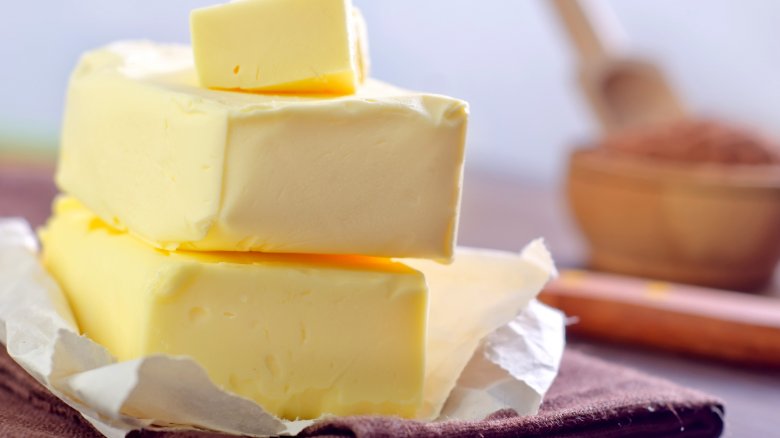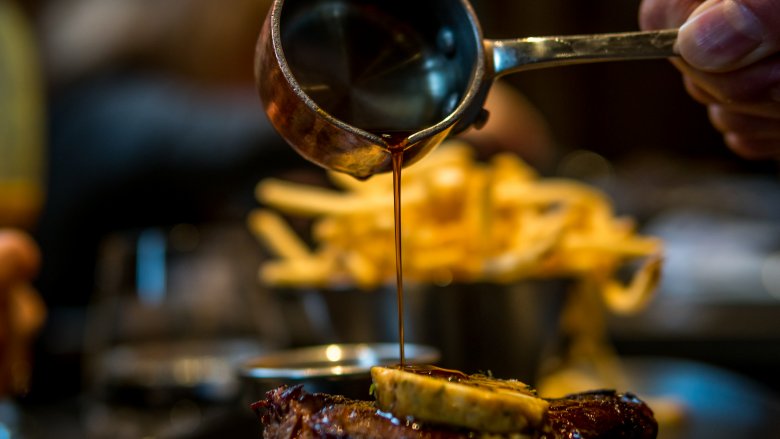The Secret To Making Incredible Sauces
One good sauce has the power to save the world. Or at least save a meal.
From the bright, citrusy sambal of Indonesia to the unabashed barbecue sauce of the United States, sauce can revive lackluster cuts of meat or brighten a bland carb. The mighty, versatile sauce has the power to balance and enhance flavors, add texture and juiciness, give food a visual flare, and salvage an otherwise boring dinner.
Mastering the art of sauce making can instantly up your cooking game, helping you elevate basic foods into complex, vibrant-tasting meals. With sauce on your side, you can turn a bland heap of boiled noodles into rich spaghetti bolognese. You can change a humble pile of romaine lettuce and grated Parmesan into a creamy Caesar salad. You can make an unassuming handful of tortilla chips into zesty nachos.
Want to harness the meal-transforming power of sauces? Get cooking with these secrets to making incredible sauces.
Start with the five mother sauces
The magic of the five "mother sauces" of classic French cuisine is that they can be the foundation for hundreds of sauces and dishes in many different cuisines — not just French. Mastering the mother sauces is your first step towards sauce maker glory:
Béchamel: Also called white sauce, this creamy sauce combines a thickening white roux of butter and flour with heaterd milk. Béchamel is found in dishes like lasagna, mac and cheese, and scalloped potatoes, and is used as the basis of cheese sauces like monray.
Hollandaise: With hollandaise, lemon juice and clarified butter are whisked into egg yolks. The sauce is popular in eggs Benedict and meat dishes, and is the foundation for French sauces like béarnise.
Sauce espagnole: This sauce involves reducing a broth made of veal or beef stock, bones, red meat, vegetables, and a thickening brown roux of clarified butter and flour. The basic brown sauce is quite flavorful, and is ofte served with roasted meats like beef, veal, or duck. This sauce is used as a basis for many other sauces, including demi-glace, bourguignonne, and chasseur.
Sauce velouté: To make velouté, a light stock is thickened with a white roux. The simple sauce is served with light dished, like fish and steamed poultry, and serves as the basis for a variety of others, including white wine sauce and sauce suprême.
Sauce tomat: The combination of meat, salt pork belly, carrots, onions, tomatoes, a thickening roux has been embraced and adapted by cultures around the world. In addition to pasta, tomato sauce is used in everything from cocktail sauce to barbecue.
Practice mise en place
Embrace the concept of "mise en place" to become a more organized and efficient sauce maker and chef. A French phrase, mise en place (pronounced MEEZ ahn plahs) translates literally to "set in place." The concept refers to the practice of gathering equipment and ingredients before you begin cooking, and it's super important when you're cooking sauces — they tend to progress through cooking quickly, and time spent searching for ingredients or chopping veggies could lead to a sauce that's overdone.
To lay out a mise en place, start by reviewing the recipe and calculating how much sauce you will need for the number of diners you're serving. Before beginning to cook, gather the tools and ingredients.
When every last saucepan and scallion you will need is in your kitchen, start preparing the ingredients. Wash, chop, mince, and dice vegetables, and cut or grind meat according to the sauce recipe. Measure and weigh out correct portions of ingredients and separate them in containers. Lay out each container in your cooking space in the order you will need them. Assemble all utensils, small appliances, and towels, and preheat any pots and pans.
Pick the right produce
Even the most talented chefs can't magic mushy tomatoes into mouthwatering marinara sauce or moldy corn into superior salsa. Set yourself up for success by selecting only high-quality fresh fruits and vegetables for your sauces.
To choose the best produce for your sauces, you'll need to tap into sensory observations and seasonal knowledge. Here are some guidelines:
-
Bell peppers: Fresh bell peppers should be smooth, firm, and shiny. Give them a shake to see if any seeds have been knocked loose; this is sign the pepper may be too old.
-
Corn: Avoid brown husks in favor of green, moist husks. Peel back the husk to observe the kernels, which should be plump and juicy.
-
Cucumbers: Look for firm cucumbers with a natural shine. Stick to green cucumbers and skip those that have a yellow hue.
-
Mushrooms: Check under the cap to ensure the gill tissue hasn't opened, which indicates a mushroom is old. Mushrooms with light-colored gills are ideal.
-
Onions and shallots: Select heavy, firm, dry bulbs without green sprouts or soft patches.
-
Spinach: Avoid wilted leaves in favor of dark-green, bright spinach.
-
Tomatoes: The most flavorful tomatoes are fragrant, with a strong, sweet, earthy aroma. The perfect tomato should feel firm and slightly heavy. Steer clear of tomatoes with blemishes, bruises, or wrinkled skins.
Heat your spices
A trusted culinary hack among Indian chefs, heating your spices can help bring out natural flavor and boost the impact of any cuisine. While spices are naturally fragrant and flavorful, heating them can take intensify their taste and take your sauce to bolder, delicious new heights. Whole spices should be toasted using a dry heat, while ground spices are best bloomed in liquid, a moist heating technique.
Whole spices like anise seeds, cinnamon sticks, coriander seeds, or fennel seeds should be dry-toasted first, then ground. You can toast whole spices on a dry pan over medium heat, shaking frequntly to prevent burning.
Ground spices like chili powder, on the other hand, may burn more quickly and should be heated with oil or "bloomed" to maximize their flavor. Mix your spices with a liquid like water, wine, or vinegar to form a paste, then cook the paste in hot oil until the liquid sizzles off, leaving only the oil.
Harness the power of emulsions
In culinary terms, an emulsion is a uniform mixture of two liquids that usually don't mix — such as oil and vinegar. To form an emulsion, you agitate the mixture by blending or whisking it. In some emulsions, an "emulsifier" may be added to prevent separation. Emulsifiers are substances that encourage two liquids that do not normally mix well to stay together. Examples include egg yolk, milk fat, honey, and mustard.
As a sauce maker, you'll need to harness the science of emulsions prevent certain sauces from separating, including:
-
Hollandaise: To bind melted butter, lemon juice, water, you can use egg yolk as an emulsifying agent.
-
Vinaigrette: Prevent the oil and vinegar in vinaigrette from separating by using mustard as an emulsifier.
-
Beurre blanc: With this sauce, you emulsify butter and white wine vinegar with the milk solids in butter.
-
Mayonnaise: To make mayonnaise, you'll need to use egg yolk to emulsify lemon juice and water.
Swap in stock
Flavor-packed and versatile, stock can be used as the platform for a variety of sauces. When a sauce recipe calls for water, stock can be used instead to add flavor. When a recipe calls for milk or cream, you can try swapping it with stock to make a lighter sauce. For recipes that call for a deglazing agent, you may be able to give the sauce body by replacing the deglazing agent with stock.
For example, try replacing water with beef broth to bring out the flavors in a barbecue sauce recipe. Or, replace the heavy cream in white sauce with a cup of chicken broth and milk for a lighter, flavorful substitute.
When working with any stock-based sauce, skip the store-bought boxes and cans and make your own. Homemade stocks come with a variety of benefits, including the ability to pack in flavor, freshness, and nutrients. You can simmer up your own beef, chicken, or veggie stock by simmering leftover bones and/or veggies with herbs and spices in water for up to 24 hours and cooling overnight.
Introduce acid
Although "sourness" is one of the five primary tastes, acidity often gets overlooked in cooking. In culinary terms, "acid" refers to ingredients that taste sour, such as vinegar and citrus.
If you've ever made a sauce that tastes flat, acidity may be just what you need to brighten and add depth to the flavor. Acid awakens the palate by inducing the production of saliva and helps balance sweetness or saltiness. For overly heavy sauces, acidity can help cut through the creaminess.
Try adding a touch of vinegar to focus the flavors of your sauce. As a modern chef, you have a huge variety of vinegars at your disposal, including fruity apple cider vinegar, smooth sherry, and bold wine.
Other forms of acidic ingredients include citrus like lemons, limes, and oranges. Amplify vinaigrette and mayonnaise with a squeeze of lime or add a squirt of lemon to bring out tart notes in a sweet ketchup. Other acidic ingredients you can use to enliven your sauces include hot sauce, pickles, sour cream, or yogurt.
Master thickening techniques
Sauce too thin? There are many different techniques that can add viscosity, texture, and heartiness to your sauce. We've outlined a handful of the best ways to thicken a sauce below.
-
Flour or cornstarch: Use flour or cornstarch as a thickening agent by stirring it with water before pouring it into your sauce at a medium heat.
-
Roux: A centuries-old thickening technique, roux is made from equal flour, fried in equal parts of fat. Roux can be made with butter, oil, bacon lard, or grease and poured directly in to thicken sauces.
-
Arrowroot: Derived from a Carribean plant, arrowroot is a gluten-free way to thicken a hot sauce. Mix arrowroot into cold water and whisk into a smooth slurry before adding it to your sauce.
-
Breadcrumbs: You can add dry stuffing or the crumbs of bread, crackers, or cookies to sauces as a thickening agent.
-
Egg yolk: Another excellent, gluten-free thickener, egg yolks can be mixed in to enrich a sauce, stew, or other liquid.
-
Pureed vegetables: Unlike many traditional thickeners, pureed vegetables are a healthy, low-carb way to thicken gravy and other sauces. Try boiling carrots, beets, or parsnips and blending them in a food processor before stirring them into your sauce.
Finish with monter au beurre
Here's another deceptively simple technique with a fancy French name: monter au beurre. The term, famously referenced in Anthony Bourdain's Kitchen Confidential, addresses the practice of whisking cold butter into a sauce for gloss and richness. By whisking a pat or two of cold, unsalted butter into a warm sauce at the very end of the cooking process, you finish it off with shine, texture, and improved mouth feel.
Traditionally when you melt butter, it separates the butter fat, milk solids, and water. But when you use the monter au beurre method, you allow the butter to soften while maintaining emulsification (remember that word?). The fat droplets of the butter should bind with the sauce's liquid to become thicker and richer.
To try this handy technique, swirl a couple of small pieces of cold butter into warm sauce over a low heat until it is incorporated. The butter should melt so it looks creamy — if the butter separates or appears oily, it's gotten too hot.
Taste and tweak as you go
Seasoned chefs know the importance of tasting food throughout the cooking process. The same technique applies to sauce making.
Get used to tasting your sauces during all stages of the cooking process so you can make adjustments as necessary. By tasting as you go, you can remedy any mistakes, make improvements, and balance flavors while you can — before you've poured it all over your dinner and it's too late.
Tasting and tweaking sauces requires an understanding of the primary flavors and how they interact with each other. We've already talked about how acidic flavors can counterbalance overly sweet or salty sauces; the same principle applies to other flavor combination. Here are some basics to fixing flavor imbalances in your sauces:
-
Bland: In addition to adding salt, you can try adding flavor to a bland dish with a drop of citrus or hot sauce.
-
Salty: Always sprinkle on salt sparingly before tasting to avoid over-salting. If you do manage to over-salt your sauce, try balancing the flavor with a pinch of sugar or a squirt of citrus or vinegar.
-
Sweet: You can balance a cloyingly sweet sauce with a salty, sour, or bitter flavor. Try adding mint, cream cheese, or a sour fruit like raspberries.
-
Spicy: For fiery sauces, try adding a spoonful of yogurt or a splash of citrus.
Pair the right sauce with the right dish
When it comes to pairing sauces with dishes, there are some obvious no-nos: You would never, say, drench sushi in ranch or ice cream in espagnole. But many nuances of sauce pairings are more subtle.
Whatever your sauce, it's important to pair flavors appropriately to enhance the flavors without overpowering. Here are some of the more important sauce flavor pairing fundamentals:
-
Red meat: Red meats like beef and lamb pair well with flavorful, dark sauces. Think gravies, demi-glaces, bechael, and barbecue.
-
Poultry: Incredibly versatile, poultry pairs with everything from light cream sauces, to zesty curries, to rich pesto, to classic butter sauce.
-
Fish: Bright, light sauces can often enhance many different seafood dishes. Try zesty lemon cream, red wine sauce, or mint chimichurri.
-
Pasta: Pairing pasta with the right sauce is its own art, so we'll stick to a few rules of thumb. Pair thin, delicate pasta with lighter sauces; flat, ribbon-like noodles with rich and creamy sauces; and long tubes with thinner sauces. Short tube pasts are more versatile, so set your sauce creativity free when working with penne and ziti.
